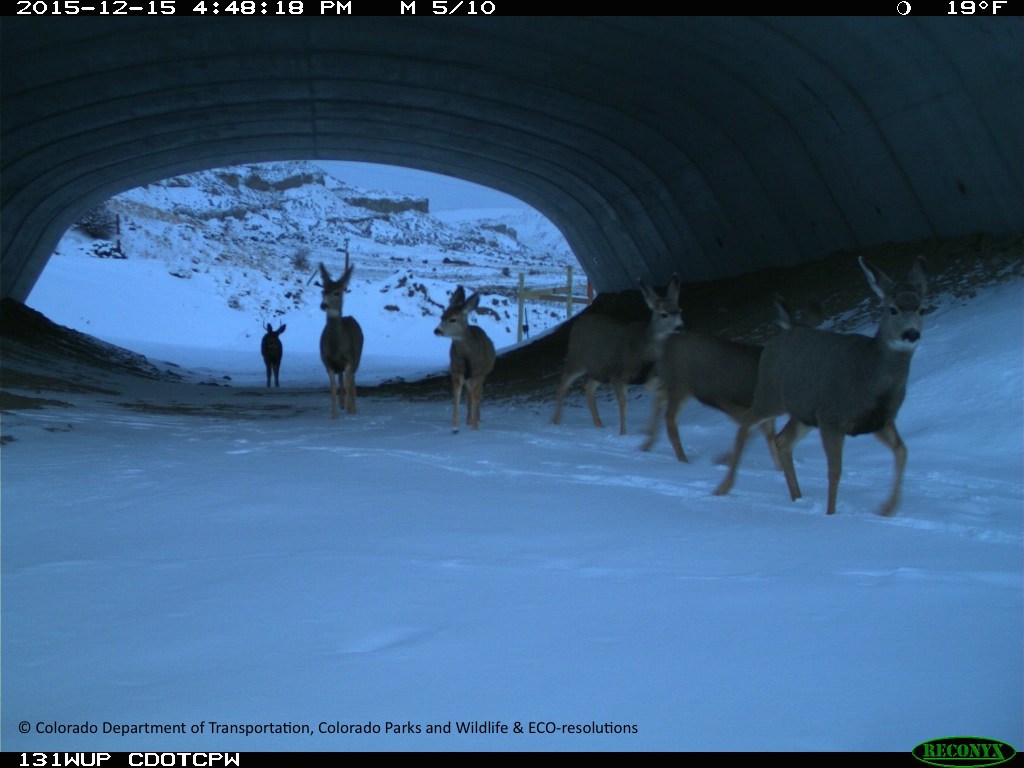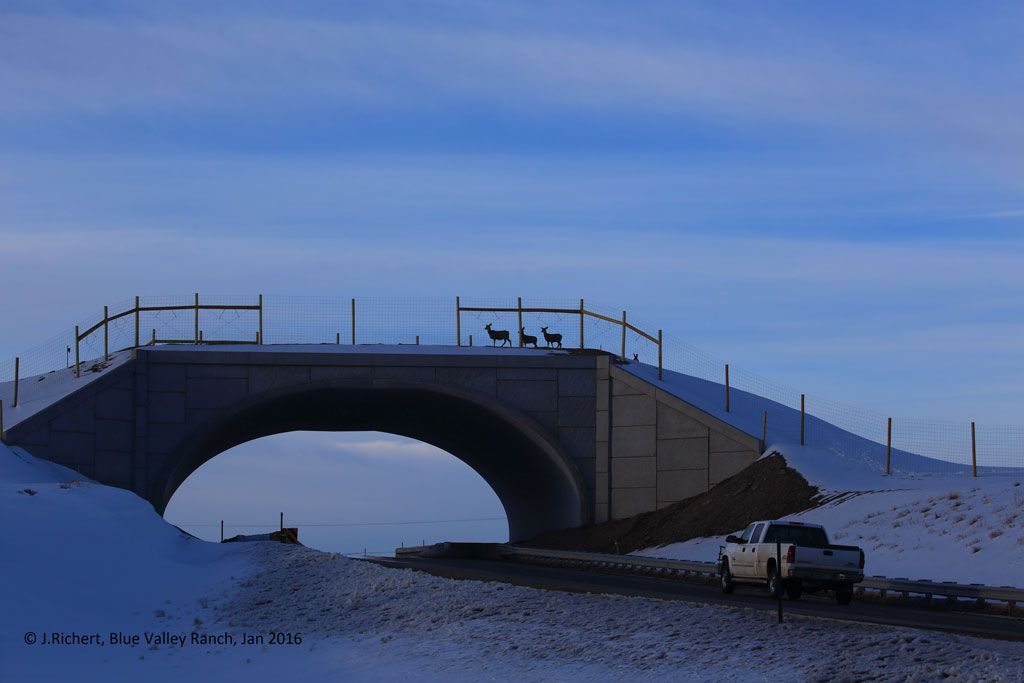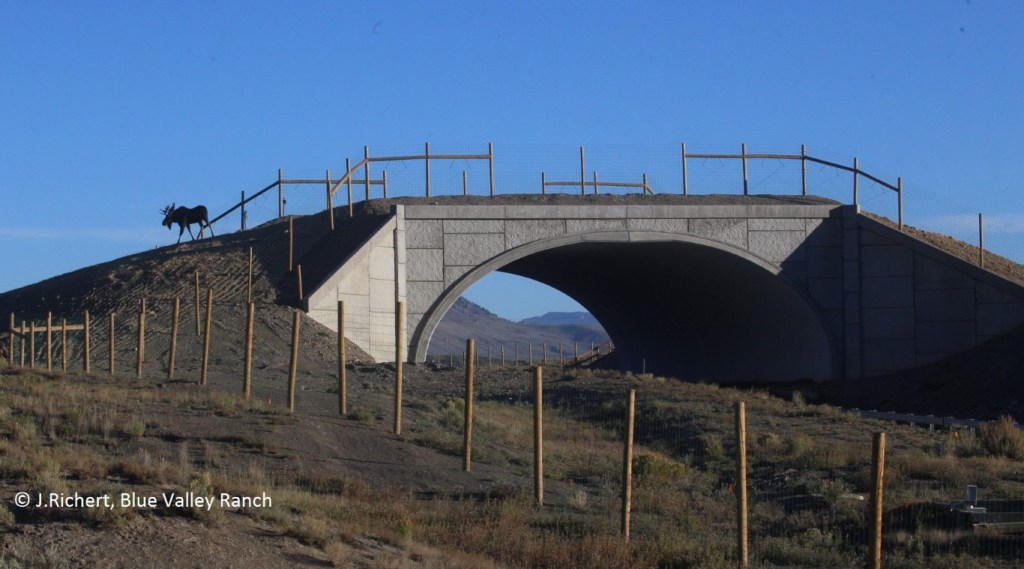Washington’s Cascade mountain range houses some of the country’s most intriguing mammals, including black bears, cougars, grey wolves and wolverines. But when Interstate 90 was built in the 1950s, running east-west across the state, it spliced ecosystems between the northern and southern Cascades. The highway also cut across streams, impeding fish passage. “Even though the South Cascades is a lot of land, it’s not enough to maintain a viable population of a lot of carnivore species,” says Patricia Garvey-Darda, a Forest Service wildlife biologist. Cougars and other carnivores need large territories to hunt and search for mates.
That’s why Garvey-Darda and a team of wildlife and transportation officials are pleased that a long-dreamed-of effort is underway: The $1-billion Interstate 90 project aims to widen a 15-mile stretch of highway, located about 50 miles east of Seattle between Snoqualmie Pass and Easton. In addition to making roads smoother and safer for drivers, the plan also helps wildlife move. Since 2009, it’s created numerous routes under the road in addition to one massive, highly visible bridge over the pavement. The overcrossing, expected to be completed next fall, will be vegetated with native plants. Garvey-Darda says the project team will even transplant soil samples from nearby areas into the crossings to inoculate the crossing with fungi to help the plants grow. While a simple bare bridge might suffice for deer and elk, smaller and slower-moving critters—like snails and salamanders—need the forest floor to essentially extend across the highway to move to new areas on the other side.

A herd of deer use a wildlife underpass along Colorado State Highway 9. (Photo Courtesy: Colorado Dept. of Transportation, Colorado Parks and Wildlife, and ECO-resolutions)
Over the past few decades, wildlife crossings—which include land bridges and underpasses—have proven effective in connecting migration routes, avoiding collisions and saving animal and human lives. Although their price tag may be steep, they can pay for themselves in the following years; according to a study in Ecology and Society, the average cost of colliding with an elk is $17,483. Many collisions with larger animals damage vehicles, incurring costs from repairs, medical bills and towing—in addition to the value of the animal itself. In total, the Federal Highway Administration (FHWA) estimates the annual cost of vehicle-wildlife collisions is more than $8 billion.
It’s not a new idea. The first bridge in the United States was built in Utah in the ’70s. And wildlife bridges are already common in some places, like Canada’s Banff National Park, which has 38 underpasses and six overpasses. But in the U.S., experts say they’re not nearly keeping up with the growing number of roads and the drivers that use them. So, officials and biologists are looking for ways to speed up the construction of new bridges and tunnels.
Roads, especially highways with fast-moving vehicles, chop apart the large territories that carnivores need and block seasonal migrations of deer, elk and bighorn sheep. At lower traffic densities, deer, elk and other species may attempt to trot across at their own risk. But as the number of cars increases, many animals won’t even bother, their habitats effectively shrinking. “There are many, many examples that we have from GPS collar information from animals where their migration movements just stop right at the highways,” says Ed Arnett, chief scientist with the Theodore Roosevelt Conservation Partnership.
Even with the more timid animals turning away, an unprecedented number are hit annually. The U.S. sees 1 to 2 million wildlife-vehicle collisions each year, according to an FHWA report. This includes big game animals like deer down to turtles and amphibians, says Arnett. Endangered species are at particular risk: Roadway fatalities are a “major threat” to 21 federally endangered or threatened species, including Florida panthers, desert tortoises and Hawaiin geese, the FHWA found. “These animals are dying needlessly and it, of course, affects human safety and taxpayer costs to deal with these collisions,” says Arnett.

Deer cross a wildlife overpass along Colorado State Highway 9. There are a total of two overpasses and five underpasses along the 11-mile stretch of road between Kremmling and Silverthorne. (Photo Credit: J. Richert, Blue Valley Ranch)
Perhaps this nexus of impacts—ecological destruction, lives lost and costs—is why efforts to build road crossings for wildlife tend to receive broad public support. One project in Colorado’s north-central Rocky Mountains underscores that. Grand County residents, Blue Valley Ranch and a local nonprofit raised $9 million in just 45 days to receive a matching grant from the Colorado Department of Transportation to build a network of crossings on State Highway 9. Michelle Cowardin, a wildlife biologist at the state’s parks and wildlife department, says that since completion in 2016, the project led to an 89 percent reduction in wildlife collisions.
But many biologists think these bridges are not being built fast enough. In response to a 2018 order from former Interior Secretary Ryan Zinke requiring officials in Western states to identify ungulate (deer, elk, and pronghorn) migration corridors, all 11 Western states said vehicle collisions are one of the top threats to migration. As the annual number of miles driven has steadily increased over time in the U.S., so too do the barriers to wildlife movement. “It’s not keeping up,” says Patricia Cramer, an independent wildlife researcher in Utah, of wildlife crossing projects. “There are more and more people driving … so it’s an increasing problem.”
Right now, wildlife crossings are usually built when other improvements to highways—such as new lanes—are needed, adds Cramer. The Washington Interstate 90 crossings, for instance, are part of a greater project to add lanes. In the approval process before construction, officials had to adhere to the Northwest Forest Plan, which identified the highway area as needing greater access for wildlife. So that’s why the crossings became incorporated into the new project.
But in the absence of a highway improvement project, it’s harder to retrofit an existing highway with a crossing structure. That means there are thousands of miles of roadways where collisions and fragmented habitats aren’t being addressed. For example, in Colorado, the issue will likely grow in the future, as the state population is expected to increase by 50 percent by 2050. In August, Governor Jared Polis signed an executive order directing agencies to identify threats to wildlife movement.

A moose crosses a wildlife overpass on Colorado State Highway 9. (Photo Courtesy: J. Richert, Blue Valley Ranch)
When a new transportation project is proposed on lands with wildlife habitat, officials managing wildlife in those areas are given notice and can request that engineers design for wildlife. However, there isn’t a process or dedicated funds established to update existing roads with overcrossings. That’s why in California, wildlife advocates are fighting to raise money for what could be the largest wildlife bridge in the world—an overpass spanning 10 lanes of busy traffic on the 101 freeway near Los Angeles. The bridge would allow the estimated 30 or so cougars of the Santa Monica Mountains region to move across to access their broad habitat and avoid inbreeding.
To relieve such hot spots, highways nationwide would need to be retrofitted with crossings. One study suggests that in California alone, it would require fencing and adding crossings to more than 3,000 miles of roads (fences prevent animals while walking into the road while they search for a crossing). “If you want it to sort it out in my lifetime, or say the next generation, you would have to build probably 10 [crossings] per year, minimum,” says the study’s lead author Fraser Shilling. “And that’s a level of investment that we haven’t managed to make.”
In Washington, Garvey-Darda points out there’s another section of I-90 located near the Columbia River where elk collisions have spiked in recent years, but there isn’t funding to build a crossing there. “It is a big safety hazard,” says Garvey-Darda. “But it’s not a part of a highway construction project so there isn’t funding for that at this time.”
That’s why many biologists, conservation advocates and hunters are excited about the possibility of including dedicated funds for crossings in transportation budgets. One such proposal in the Senate, America’s Transportation Infrastructure Act of 2019, would allocate $250 million in grants over the next five years for projects aimed at reducing wildlife-vehicle collisions. It has bipartisan support; in July, it passed unanimously in the Senate Environment and Public Works Committee.
Although those highway funds could help projects get going, Cramer thinks the greater goal for protecting wildlife should be a change in how transportation agencies work. “What we want to see is a new way of doing business,” she says. “How does every project promote wildlife connectivity?” Sometimes just a tweak to an existing design—say, making a culvert a little wider to allow wildlife to walk through—is all it takes to avoid impeding animals.
